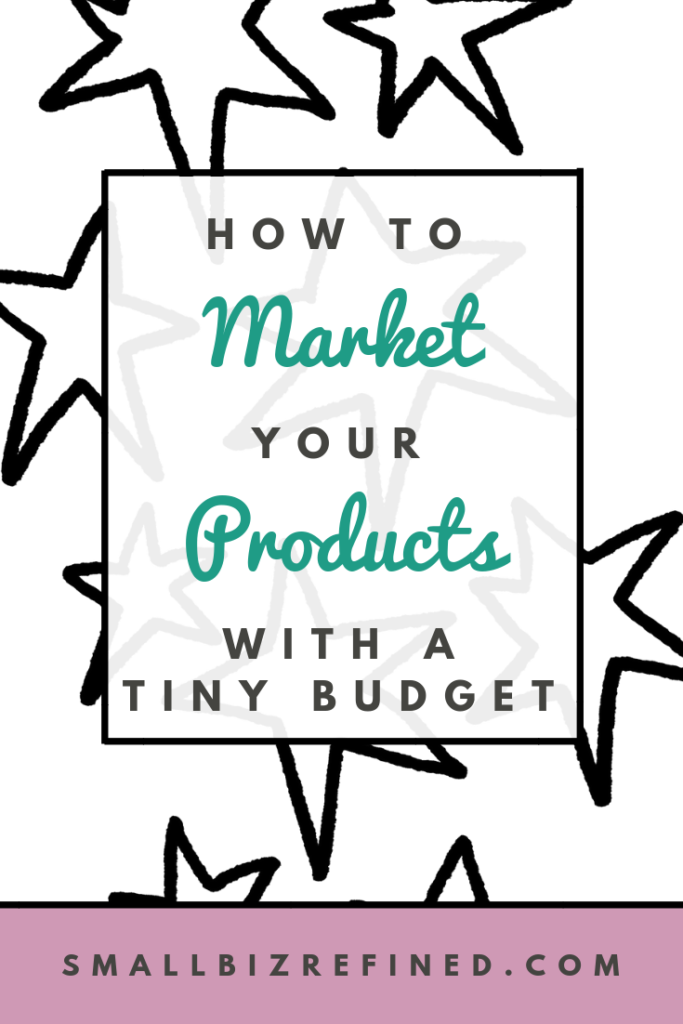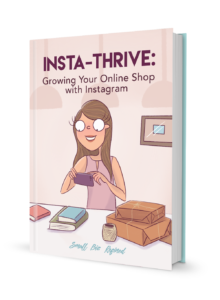Last Updated on March 13, 2024 by Taylor
When it comes to building a business, usually something’s gotta give: either you pour your time into it, or you pour your money into it. Of course, if you can strike a balance between the two, it’s the best of both worlds.
Most people start out with a limited budget for their business (I did too!), so I want to share with you the best free, or very cheap, ways to grow your business while sticking to your budget.
Bonus: I’ll include some time-saving tips, so you’re not spending every free moment glued to your device. Because sometimes, you just want to luxuriate in the bath with a face mask and a book. Nothing wrong with that!

Please note, some links on this page are affiliate links. If you make a purchase through an affiliate link, I may receive a small commission at no additional cost to you. As an Amazon Associate, I earn from qualifying purchases. See my full disclosure policy for more information. Thank you for your support!
1. Grow an Engaged Following on Instagram
Instagram was the foundation on which I built my entire online shop, before I had the time & budget to build a website. And, from what I’ve found, it’s the BEST way to connect one-on-one with potential customers.
For your own business, this is where I recommend you start (if you haven’t already). It may seem daunting to build up a horde of followers, but let me squash that myth: follower number isn’t the most important factor in how successful your business is. Engagement matters more.
Here’s a post to help you increase your brand’s engagement on Instagram, even with a small following. I go into detail about being strategic with Instagram stories, Direct Messaging etiquette, what to add to your post captions, and more.
Additionally, having attractive photos really helps increase your engagement and get you noticed. Instagram is a visual platform, and users are drawn to creative and interesting posts. Not surprisingly, people will be more likely to like & comment on your posts if they’re pretty.
So I’ve compiled a list of 35+ prop & backdrop ideas to help you uplevel your Instagram & product photography. Just a few interesting props or backgrounds can go a long way and can be re-used over and over again.
Time-saving tip: store everything you use for photography in the same place/container, so you don’t have to waste time trying to find anything when you’re ready to take a picture (or when you suddenly find yourself in that rare window of time with perfect lighting!).
Use Instagram to Build a Community Around Your Brand
Another important step: try to find a way to build a community around your brand.
Here’s an example:
In the #Bookstagram community, a lot of users like to participate in reading challenges. A reading challenge typically includes a short list of themes on which to base their book choices for the month. For example, ‘a book with a color in the title’, ‘a book that’s been on your TBR list for over a year’, or ‘a book set at sea’.

Challenges like this are perfect for getting the word out about your brand while giving you a chance to start a conversation with users. Plus, they’re a lot of fun and get your creative juices flowing! Check out @foxandwit for some really cool monthly reading challenges.
2. Drive Traffic to Your Website Using Pinterest
Pinterest is an online business owner’s dream.
It combines keywords and visuals so that users can find, sort, and save information & products that appeal to them. Fun fact: it’s the #1 shopping platform for millennials.
Pinterest is easy and 100% free. It’s got over 400 million monthly users in the United States alone. Pins on Pinterest last wayyy longer than a post on any other social media platform, so they can continue working for you even years later. And, especially if you couple Pinterest with Tailwind, it can be explosive for your traffic.
Here are the high-level steps I recommend for using Pinterest for business:
- Set up your Pinterest account so that it’s optimized for getting your brand found + making sales.
- Clean up your boards so they are relevant only to your brand & ideal customer (hide all personal boards & pins).
- Pin consistently. Pinterest prefers you to pin a certain number of pins every day, rather than pin a bunch at once and then ignore it. Tailwind is your best tool for this – you can schedule pins ahead of time, all at once. Plus, you can get your pins in front of power pinners for a huge boost in traffic! (Tailwind has a free plan, which allows you to schedule 5 pins per month and you can use some of the features – like joining a Tailwind Community – too! Here’s a link to sign up.)
- Put keywords everywhere (in your bio, board descriptions, AND pin descriptions). But use full sentences – Pinterest doesn’t like keyword-stuffing.
Use hashtags. Yes, you read that right! Pinterest allows hashtags now. If you use them, your pin will show up chronologically if a user searches for that hashtag. Put 3-5 hashtags at the bottom of your pin descriptions.(Update: hashtags are no longer considered useful on Pinterest!)Re-pin others’ content more than you pin your own.(Update: it’s now considered best practice to pin as much of your own content – if not more – than others’ content. But it doesn’t hurt to share content from other creators intermittently.)- Use Canva to design beautiful pin graphics for free. Make sure they’re longer than they are wide!
3. Increase Sales with Email Marketing
Building an email list is the strongest, most direct way to drive sales. It’s a perfect way for retailers to showcase new products, advertise a sale, or share a blog post.
Posts on social media might not even be seen by your followers. Emails are much more likely to reach your customers.
I use ConvertKit for email marketing and I love it! It’s a robust platform that allows you to easily create email campaigns, landing/sales pages, and forms for your website.
The best part: they have a FREE plan (called the Newsletter Plan) where you can have up to 10,000 subscribers, plus unlimited landing pages, opt-in forms, email sends, and more.
Plus, ConvertKit is actually tailored to product sellers (both physical & digital). Depending on your plan, you can track the interests of your audience and automatically tag your customers based on which products they’ve purchased.
Check out all the details for ConvertKit’s plans here.
How do you get people to sign up for your mailing list?
Tempt them with an enticing offer or freebie. Here are some examples:
- A discount code
- A free gift with first purchase
- A free printable (ex: a calendar page or art print)
- A free download (ex: a checklist/guide on how to use one of your products)
- A coupon for free shipping
Keep in mind: it’s not a successful marketing strategy to send out a bunch of emails about a sale you’re having, and then disappear off the face of the Earth. It’s the biggest mistake I see retailers making with email marketing (I’ve been guilty of this myself in the past!).
You want your customers to get to know you. You want to show them how your products can improve their lives or solve a problem for them. Give them value, and they’ll return it with their trust.
4. Get SEO Juice with Content Marketing (Start a Blog)
You probably just rolled your eyes at the screen, right? You’ve got a million things on your plate, and you’ve barely got time to get dressed in the morning. If that’s the case, don’t stress. Starting a blog is important, but it’s not essential. (Unless your business is your blog, in which case it’s pretty important!)
If you’re more established, or you’ve got some time to go all-in on your business, blogging (aka content marketing) can make a huge impact.
Most importantly, having a blog makes it more likely that your site will show up in a Google search. This is especially true if you use long-tail keywords (as in, longer keyword phrases), because you won’t be competing against as many other sites for that spot.
Plus, blogging gives you content to use for your email marketing, Instagram captions, and Pinterest pins. It’s an awesome way to use batching & repurposing to save time.
Not only that, but it sets you apart as an authority in your niche. You can show that you really understand your area of expertise (topics surrounding your products), and your audience will be more likely to trust you. It’s also a great way to show off that shining personality of yours!
For bloggers, I highly recommend WordPress. For product shops, Shopify is king. You can get a free trial to Shopify here.
It allows you to sell your products AND blog on the same site, without any complicated tech work. I used it when I owned an online bookshop, and I loved it!
5. Gain Brand Authority with Influencer Marketing
I know I mentioned before that social media followers aren’t as important as high engagement, and it’s true. But I’ve gotta admit: having more followers doesn’t hurt.
In early 2018, I stumbled across a social media marketing method that was game-changing for me. The kicker? It required little effort and the costs were minimal. I know, it sounds too good to be true. But it really exists, I promise!
The method I found was influencer marketing, or what I call brand representatives.
This post goes into more detail on how to use influencer marketing to increase your traffic & sales.
This strategy can be used for social media, or you can also reach out to bloggers with a decent-sized following. Ask if they want to review your product on their blog, or include it in a Gift Guide article.
There you have it! The best strategies I’ve found for growing an online business with a minimal marketing budget. I hope these tips help you kick butt in your business this year!

Want to know how I grew my online shop to over 6k followers (and over 2,800 orders in 2 years) on Instagram? I wrote an eBook that walks you through the best growth & engagement strategies I’ve found! Learn more.

